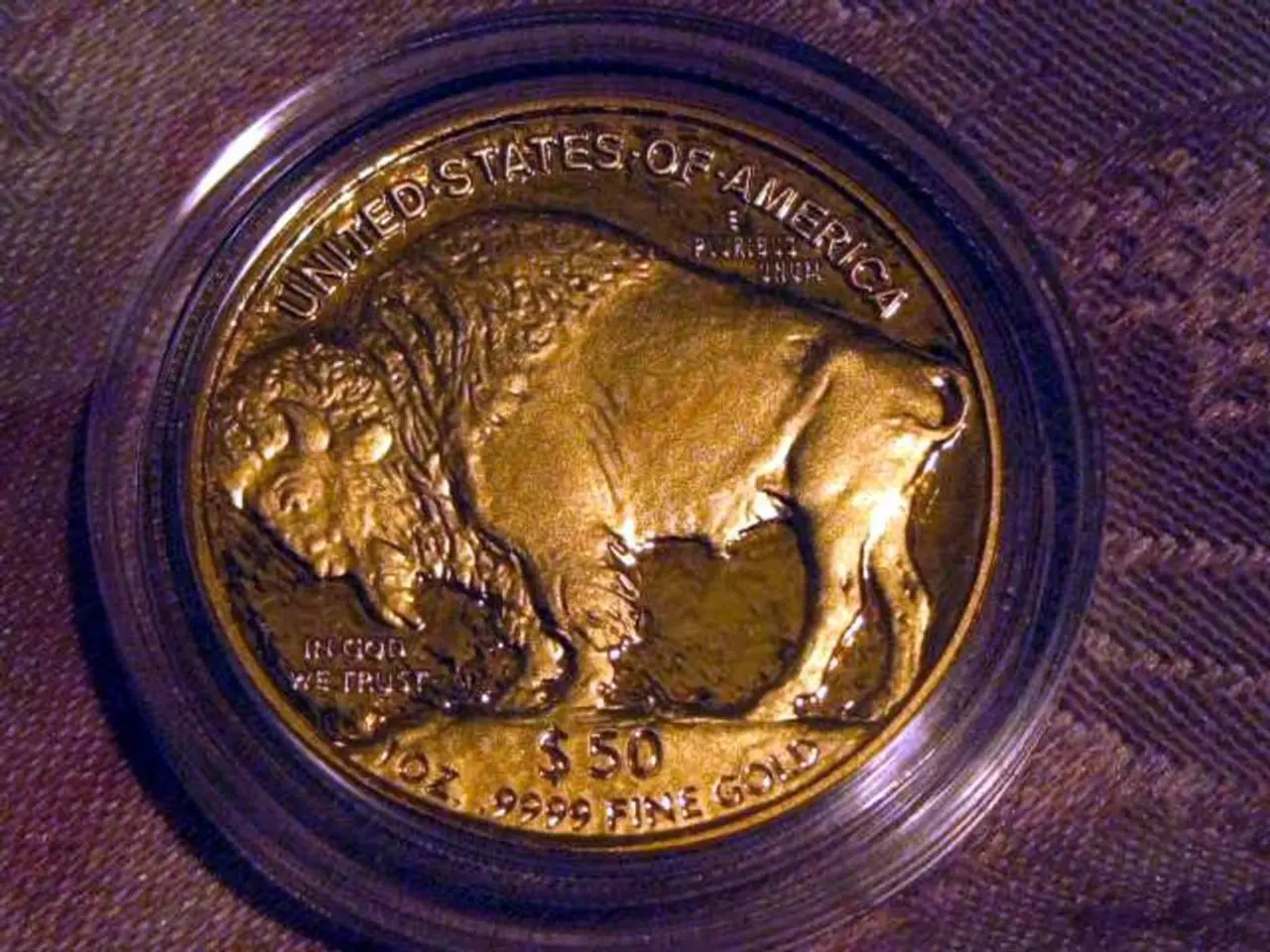U.S. dollar records slight increase vis-à-vis Indian Rupee
Hey there! Let's take a closer look at how the Pakistani Rupee (PKR) has been faring against the US Dollar (USD) since March 4, 2025.
Recap of Rupee's Performance
On March 4, 2025, the PKR was approximately equivalent to 276-277 PKR per USD. Fast forward to Thursday, June 21, 2025, and the PKR stood at 283.64 PKR per USD, marking a slight depreciation of 0.03% in the interbank market. It's worth noting that the PKR lost Re0.09 against the greenback compared to its closing rate on Wednesday.
Global Market Influences
The US dollar firmed up on Thursday, bolstered by heightened safe-haven demand due to the increasing threat of a broader conflict in the Middle East and possible US involvement. As investors digested Federal Reserve Chair Jerome Powell's cautionary tone on inflation, numerous currencies, including the Australian dollar, New Zealand dollar, and emerging market currencies like the South Korean won, faced weakness [3].
The rapid escalation of tensions between Iran and Israel, now entering its seventh day, has caused uncertainty and apprehension in global markets, with the potential for U.S. involvement also weighing heavily on investor sentiment [4]. Increased geopolitical tension has swiftly reasserted the US dollar's safe-haven status, causing it to gain ground against various currencies, including the yen, euro, and Swiss franc [4].
A Deeper Look at Exchange Rates
In the open market, the PKR slipped 27 paise for buying and 11 paise for selling against the USD, closing at 284.13 and 285.69, respectively. The PKR also experienced a decrease against the Euro and UAE Dirham while gaining slightly against the Saudi Riyal [1].
The Big Picture
From March 4 to June 21, 2025, the PKR demonstrated remarkable instability against the USD, driven by a medley of economic, geopolitical, and global oil price factors. The PKR experienced peak weakness at approximately 293.34 PKR per USD around March 10, 2025. Following that, the PKR showed a degree of recovery and relative stability, with domestic economic resilience and geopolitical considerations playing key roles [2][5].
While explicit oil price data for this period is missing in the sources, the PKR's fluctuations in early March and gradual recovery suggest that oil price volatility likely contributed to the exchange rate movements alongside geopolitical factors [2]. For a more comprehensive understanding of the PKR's overall performance since March 4, 2025, head over to the Enrichment Data section below.
Enrichment Data
Overall:
From March 4, 2025, to the present (June 21, 2025), the Pakistani Rupee (PKR) exhibited notable fluctuations against the US Dollar (USD), influenced by a combination of economic, geopolitical, and global oil price factors.
Exchange Rate Performance Overview
- On March 4, 2025, the USD to PKR exchange rate was approximately in the range of 276-277 PKR per USD. The high for March was around 277 PKR, and the low was near 269 PKR, with an average of about 274 PKR for the month[2].
- The rate peaked early in March at about 293.34 PKR on March 10, 2025, representing the worst exchange rate (highest PKR depreciation) during the period[1].
- Subsequently, the rupee showed some recovery through April and May 2025, with rates averaging around 276 PKR in April and declining slightly to 273 PKR in May[2].
- By late May 2025, the PKR traded near 282 PKR per USD, maintaining relative stability. For example, on May 22, 2025, the PKR closed at 282.05 PKR per USD, supported by steady foreign exchange reserves and consistent remittance inflows[5].
- As of mid-June 2025, the PKR continued a modest strengthening trend, with forecasts indicating the USD to PKR rate dropping to approximately 266 PKR average for June and an expected 263 PKR by the end of June 2025[2]. The current rate on June 21, 2025, was around 283.40 PKR per USD[2].
Geopolitical and Economic Factors
- The period saw market volatility driven partly by geopolitical tensions affecting Pakistan, such as regional security concerns and political dynamics that typically influence investor confidence and capital flows, thus impacting PKR valuation.
- Domestic economic factors, including foreign exchange reserves stability and robust remittance inflows, helped buffer against sharp depreciation and contributed to the relative stabilization of the rupee after early March[5].
Impact of Global Oil Prices
- Pakistan, being an oil-importing country, is sensitive to fluctuations in global oil prices. Rising oil prices during this period exerted inflationary pressures and widened the current account deficit, typically weakening the PKR.
- Conversely, any moderation or stability in oil prices would have alleviated some pressure on the currency.
- Though explicit oil price data for this period is not provided in the sources, the PKR’s oscillations in early March and gradual recovery afterwards suggest that oil price volatility likely played a role alongside geopolitical factors.
Sources:[1] https://www.dawn.com/news/1584632/dollar-depreciates-slightly-in-interbank-market[2] https://www.tradingeconomics.com/pakistan/inflation-cpi[3] https://www.reuters.com/business/us-dollar-stays-firm-as-risk-appetite-takes-knock-12-iran-crisis-2025-06-18/[4] https://www.nytimes.com/2025/06/19/world/middleeast/iran-us-tensions.html[5] https://www.saamaa.tv/economy/pakistans-forex-reserves-touch-9-billion-black-day/
- The US dollar's strengthening on Thursday was a result of increased safe-haven demand due to geopolitical tensions in the Middle East and possible US involvement, causing currencies like the Pakistani Rupee (PKR) and the South Korean won to face weakness.
- In the finance industry, trading options for the PKR against the US Dollar could be influenced by these geopolitical risks, as well as the volatility in global oil prices, given Pakistan's status as an oil-importing country.
- The rapid depreciation of the PKR against the US Dollar since March 4, 2025, as demonstrated in the data, could impact investments in the energy sector within Pakistan, as foreign exchange rates play a significant role in determining the cost of imports.
- For retirees with Individual Retirement Accounts (IRAs) invested in Pakistani companies or assets, the fluctuations in the value of the PKR against the US Dollar may lead to changes in the overall return on their investments, increasing the overall risk associated with these investments.




